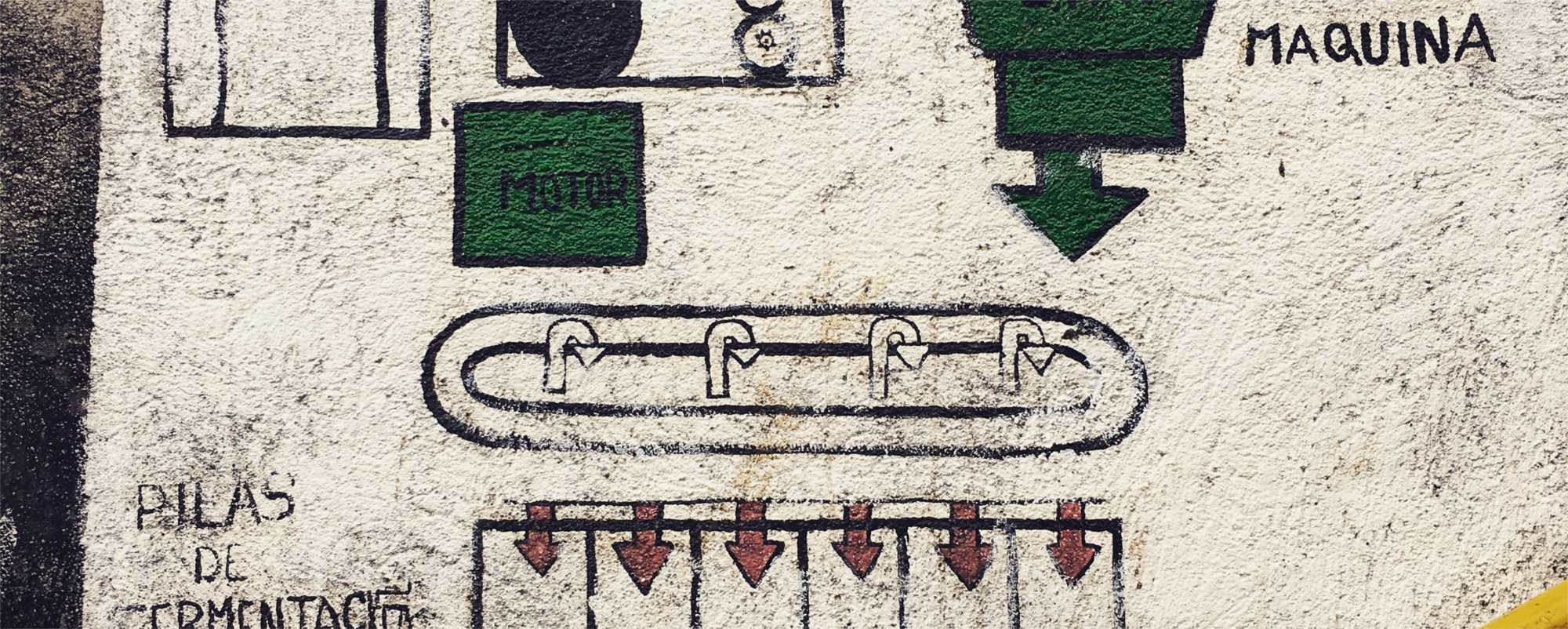From battle grounds to coffee grounds.
Friday 3 November 2017 by

An amazing origin story from Nicaragua, check out the natural-processed Jinotega SHB from Agropequaria Bariloche farm here.
With 100 years in the business, it's not very often that the Bennetts team see something that gives them cause to pause for a moment. You'll have to forgive us when we say that this particular origin story did; it's a heartening account of hard-work and well-earned rewards arising from conflict. Read on if you feel like a shot of cheeriness.
Louis Blandino's journey to healing the land with coffee.
Just 35km out from the capital of Nicaragua’s coffee region, Jinotega, lies the Sandinista’s old stomping ground during the brutal revolutionary conflict that tore Nicaragua apart throughout the 1980s.
San Antonio de Las Chuchillas was one of their biggest military bases in the northern region, and after undergoing a long transformation process, today it is a coffee farm producing some of the nation’s most exceptional crops. Achieving this was no small task; it took PADCA-OEA (a mine-removal program) two years (2004-2006) to clear all the mines that the Sandinistas had laid around the camp… they found almost 11,000.

Contra Commandos from FDN and ARDE Frente Sur, Nueva Guinea area in 1987
The land had two previous owners, both of whom planted coffee within the ring of dormant mines, but in 2006 Claude Bernard Ulvert purchased the land and set about transforming the conflict-weary soil into the fertile, arable land that it is today, with the help of his trusted colleague Louis Blandino.
Louis has been a coffee producer for most of his adult life, and, recognising his talent, Don Claude recruited him soon after purchasing the farm. Louis was conscripted into the Sandinista army in 1986 and fought against the Contras in the Jinotega region for over 2 years, so he knows the area well.
Upon acquisition, only 30 hectares of the farm was planted with coffee, but today nearly 100 of the 126-hectare farm is covered in flourishing coffee trees. To achieve this, much of the land that was rendered infertile by the marching boots of soldiers during the civil war had to be renovated. Today, the farm is producing around 3800 x 60 kg bags at each harvest.

The road into Agropequaria Bariloche Farm
In addition to increases in quantity, the quality of the coffee has also been drastically improved. In 2006, the farm was producing mediocre coffee from a few lots of Caturra. Now the dominant varietals on the farm are Marsellesa, and two hybrids referred to as H1 and H3 -the last of which reached 26 Brix Grade this harvest.
Alongside Exportadora Atlantic, they have developed a fine micro-lot business using these new prolific varieties, producing large quantities of both natural- and honey- processed coffee. Last year, the team participated in the annual competition Los Cafés Más Finos de Nicaragua (The Finest Coffees of Nicaragua) and received significant recognition from the national jury.
There is a nursery right in the centre of the farm, where 80,000 young Marsellesa plants are currently being carefully manicured, and nurtured. They will be planted later this year, adding 14 hectares to their already impressive 100.

The barren site of the Sardinista militia's old helicopter pad at Agropequaria Bariloche Farm, where the team are hoping to plant new trees by the end of the year.
At the wet mill, the discarded pulp is placed on concrete slabs that are dotted around the farm called “planchones”, which were once the soldiers’ quarters throughout the 80s. They have now knocked all these buildings down, but they left the base layer of foundational concrete to use as drying space for the coffee pulp. They then mix the pulp with calcium and biomax to make a natural fertiliser to rejuvenate the battered land.
This is particularly evident at one of the highest points of the farm, where a 250 metres squared patch of land is levelled out and rock hard under foot. It used to be the Sandinista’s helicopter pad, but Louis has started to uproot the earth with a tractor and laying out this coffee pulp fertiliser, in the hope of planting a lot of Marsellesa there later this year.

A diagram of the mill's system flow of the external wall of the mill.
Louis ensures that all the water used during the depulpation process is recycled. He also had 30% of the farm solar panelled, a statistic they are hoping to increase in the upcoming years. Thanks to these practices, the farm has achieved a whole host of certifications; UTZ, Rainforest Alliance, Starbucks, AAA and Café Practicis. These certifications have been particularly useful in helping to protect the water sources, ensuring there is at least 5m of space between the streams and the coffee plants. Furthermore, they have significantly improved the lives of the workers, providing them with better working conditions, better equipment and better pay.
There are already a few rooms for the permanent workers, however, there are plans in place to convert two of the “planchones” back into the camps they used to be; this time for coffee pickers rather than Sandinista soldiers. At the moment, they send a tractor down to the local community at 5am, but as of next year, workers will be able stay on the farm during the harvest months. There are plans to create a more social side to the farm as well, by building a clubroom for the workers where they can relax, watch television and play sports.
At the moment, the workers, the environment, the trees, and the coffee are extremely well looked after, and this certainly looks to improve as time goes on under Luis’s leadership.
Check out the natural-processed Jinotega SHB from Agropequaria Bariloche farm here.


